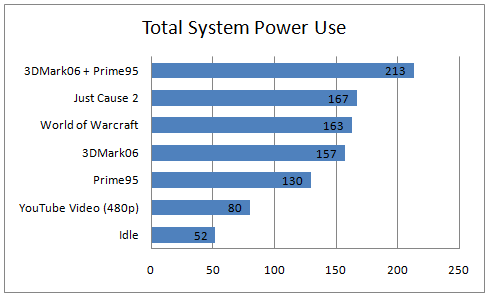One of the most common questions I am asked by readers is for recommendations on the best power supply for their mini-ITX gaming systems. It’s one of the more popular topics on our forums. Not surprisingly, many builders are faced with dilemma of trying to spec a power supply that will suit their builds. It needs to have enough power to run high end components, yet be compact enough to fit into their chosen mini-ITX case; two requirements that do not often go hand in hand.
There is a solution, but it requires that I go out on a limb and suggest something that I have recently learned with my mini-ITX builds and from some research into full size gaming rigs. No doubt, it’s something that many people (including a few manufacturers) might disagree with:
You don’t need as much power as you think you do!
Most system builders have no concept as to how much power their computer actually uses. I know I didn’t. When I laid out my first ITX gaming system, I figured that I would need a rather large power supply given that my chosen video card, a Gigabyte Radeon HD 6850, carried a minimum power supply rating of 550 watts. Wanting to leave myself a little overhead, I built my system with a 700w OCZ power supply.
Being a standard ATX PS/2 unit, the OCZ power supply required the use of a mini-ITX chassis that would support it. Fortunately, the Lian Li PC-Q08 turned out to be an excellent case for my build. It turned out to be a powerful and compact gaming system.
However, my quest had always been to make my systems as small as possible and although the PC-Q08 is a mini-ITX case, it’s one of the larger ones available, partly due to the ATX PSU support. Many smaller mini-ITX cases won’t support an ATX unit.
So what about a smaller PSU?
There are several choices of power supplies that are smaller than the ATX, but smaller form factors also mean smaller capacities.
SFX power supplies (sometimes referred to as micro ATX PSU’s) offer a possible alternative to a full size PSU. A quick search on Google shows that several reputable manufacturers make SFX power supplies up to about 400 watts. Not only will these SFX power supplies allow the use of smaller cases, but thanks to the often included adapter plates, they can also take the place of larger ATX power supplies to free up space inside the case.
Too bad 400w isn’t enough for a gaming system.
Or so I used to think. As it turns out, 400 watts is more than enough power to run a high end mini-ITX gaming system (and probably most ATX systems too). I understand if you don’t believe it. I didn’t. Not until I plugged my system into a power meter and saw how much energy it actually uses.
The chart below shows the maximum number of watts that the system pulled during each task:

The system in question consisted of:
- Intel DH67CH Motherboard
- Intel i5-2500K Processor
- Gigabyte Radeon HD 6850
- 2 x 2GB G.Skill Ripjaw Gaming Series DDR3-1333
- Western Digital 500GB Caviar Blue HDD
- Samsung DVD-RW
- Intel Stock Cooler
- OCZ 700w ModXStream PSU
- Lian Li PC-Q08 Chassis
I tried several different combinations of applications and benchmarks on different settings and 213w was the maximum draw I could get. Taking into account the 86% efficiency rate of the OCZ ModXStream series, the components inside my PC are peaking at 183w.
Even allowing for extra overhead, a quality 80+ certified SFX power supply around 400w would be sufficient for my needs. Several manufacturers offer such a model. Silverstone offers the ST45SF, a 450w SFX unit and Ultra has a 400w X4 modular SFX unit that will also cut down on cable clutter.
Next time you’re taking on a mini-ITX build, don’t be discouraged by small chassis with SFX power supplies. Take a few minutes to figure out just how much power your system actually needs and chances are that compact SFX power supply will be up to the job.
